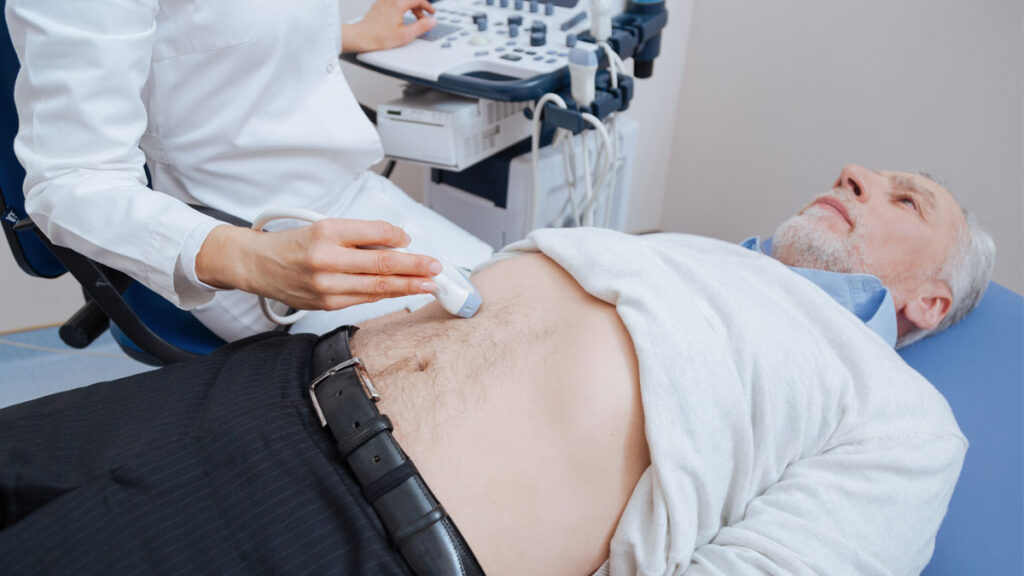
What is an Abdominal Aortic Aneurysm?
An abdominal aortic aneurysm, or AAA, is characterized by the enlargement of the lower aorta. The aorta is the largest blood vessel within the body and runs from the heart through to the abdomen. It is responsible for delivering oxygenated blood throughout the body. An abdominal aortic aneurysm is a serious condition that can cause the aorta to rupture, resulting in life-threatening bleeding. Treatment for AAA may include lifestyle changes and surgery. However, AAA can be difficult to detect early on, so it is important to know the symptoms and risk factors.
AAA Symptoms and Risk Factors
An abdominal aortic aneurysm is an enlargement of the lower aorta with a diameter of at least three centimeters. These aneurysms tend to grow slowly and often lack significant symptoms before rupture, making them difficult to detect. Some of the symptoms include abdominal and back pain. A ruptured AAA has more extreme symptoms, such as sudden, intense lower back or abdominal pain, dizziness, shortness of breath, heightened heart rate, and fainting.
Being aware of the risk factors for AAA can help with early detection. These include the following:
- Being male
- Older age
- High blood pressure
- Family history of AAA
- History of other aneurysms
- Tobacco use
If you have any combination of these risk factors, your doctor may recommend an AAA screening.
AAA Screening and Diagnosis
AAA screening is critical for at-risk individuals. The lack of symptoms is one of the only ways to diagnose an aneurysm before it ruptures. The United States Preventive Services Task Force recommends a one-time screening for men between 65-75 years old with a smoking history. If you do not fall in this category but have other known risk factors, your doctor may still recommend you for screening.
An AAA screening consists of a vascular ultrasound exam focused on the abdominal area. A Registered Vascular Technologist or RVT often performs this painless, noninvasive exam. RVTs are trained to perform vascular ultrasounds, focusing on the circulatory system.
Vascular ultrasound exams use soundwave technology to produce images of the veins and arteries. Ultrasound exams are quick and safe with no known side effects. The ultrasound machine consists of a video monitor, console, and a handheld device called a transducer. The transducer emits harmless, high-frequency soundwaves that help create images of what is happening inside the body.
During an ultrasound exam, the RVT will have the patient lay down on an examination table. They will apply a gel to the transducer that helps eliminate air pockets when pressed to the skin. The RVT will gently press down on the skin using the transducer, which allows the soundwaves to travel through the body and create images of the veins and arteries. These images will then be sent to a physician for interpretation and diagnosis.
AAA Monitoring and Treatment
If you are diagnosed with AAA and surgery is not deemed necessary by your doctor, then you will likely go in for additional vascular ultrasound exams to monitor the aneurysm. Other than surgery, treatment for AAA may include:
- Quitting smoking
- Medication to lower blood pressure
- Healthy eating and exercise
These lifestyle changes can also help to reduce risk of AAA in the first place.
Vascular ultrasound screenings can be crucial when it comes to diagnosing serious illness such as an abdominal aortic aneurysm. It’s important to be aware of the risk factors for AAA and speak with your doctor about any concerns you may have. Regular doctor visits and screenings can help with prevention and early detection.
Guest Contributor: Jordan Galerkin
Sources:
- Abdominal Aortic Aneurysm. Mayo Clinic. https://www.mayoclinic.org/diseases-conditions/abdominal-aortic-aneurysm/symptoms-causes/syc-20350688
- Abdominal Aortic Aneurysm. National Health Service. https://www.nhs.uk/conditions/abdominal-aortic-aneurysm/
- Abdominal Aortic Aneurysm Screening. National Health Service. https://www.nhs.uk/conditions/abdominal-aortic-aneurysm-screening/
- Screening for Abdominal Aortic Aneurysm. American Family Physician. https://www.aafp.org/pubs/afp/issues/2020/0515/od1.html
